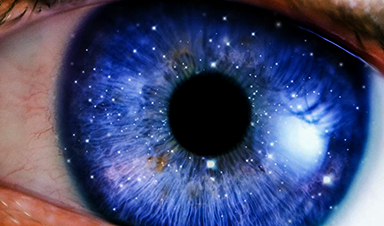A group of researchers proposed an optimized electroforming strategy to achieve a bioinspired nano-holed TiO2 coated Ti6Al4V alloy, according to a study published in the journal ACS Applied Material Interfaces.
Near-infrared (NIR) energy plays a critical part in directed exterior stimulation treatments, and it is increasingly used in spine treatments. As a result, biomaterials with NIR-activated characteristics are intriguing for future orthopedic operations.
Structures demonstrated the creation of localized nano-pores grouped in a periodic configuration thanks to careful management of the electrodeposition conditions.
According to Cassie-Baxter’s model, this unique arrangement resulted in greater thermal decomposition resistance and accurate hydrophobic permeation behavior, both of which are required for optimal biological reactions in an implantable device for directed bone replacement.
Furthermore, the randomly distributed sub-wavelength-sized crystalline structure has distinctive optoelectronic properties, resulting in greater NIR reflectivity.
Importance of Near-Infrared (NIR) Radiation
Because of its low diffraction and absorption by indigenous biomolecules and natural substances, near-infrared radiation (NIR) (720-1280 nm) has a greater cellular permeability.
As a result, its usage as illumination in phototherapies has piqued the interest of the healthcare sector.
There has been an abundance of documented studies and research that have mostly described the advancements of NIR-light-sensitive materials and their prospective therapeutic abilities to date.
Utilization of Titanium Alloys as Biomaterials
Due to their high bioactivity and physical characteristics, titanium alloys are now the most extensively utilized bone replacements in therapeutic implants.
On the other hand, titanium oxide has strong photoelectrocatalytic capabilities, making it ideal for photodynamic and photonic therapy.
However, its total photochemical action is limited to UV light (275-390 nm), which has a limited application in medicine owing to its well-known negative impacts on normal tissue and limited transmission.
As a result, various proposals have been made to expand the optical sensitivity of titanium-based biomaterials from ultraviolet to visible and near-infrared areas by doping them with conductive, non-conductive, and rare-earth elements, or by inducing a regularly structured arrangement on them.
Mimicking Biological Features on Titanium-Based Orthopedic Materials
Recreating biological structures on titanium-based orthopedic materials and integrating them with photonic qualities triggered by NIR can contribute to titanium’s inherent good attributes. This advancement would extend the spectrum of potential in the realm of metallic implant-based health therapy.
The researchers claimed that after developing a nano-holed organic layer, they were able to modify titanium alloy to achieve NIR optical characteristics.
Their coated Ti6Al4V exhibits higher resilience against oxidization, hydrophobic surface morphology, and increased light-trapping capacity in the NIR range, thanks to its nano-holed coating.
These characteristics would be used to create flexible and useful alloys for pharmaceutical products.
Research Findings and Conclusion
The researchers investigated the fabrication of a nano-sized film of heterogeneous TiO2 on Ti6Al4V alloys.
A bioinspired periodical array of nano-sized holes was achieved after precise regulation of electrodeposition parameters such as input load, electrolytic composition, pressure, and electrodeposition duration.
Their research shows that the coating offers the metallic sheet a surface with thermal oxidation resistance, nonlinear texture, hydrophobic wettability behavior, and distinctive NIR electro-optical properties as a result of its distinctive and well-defined surface topography.
The preferred phase change of the nano-holed-coated Ti6Al4V during the oxidation process has been verified to be rutile.
The reaction is limited to the surface, rather than the Ti/metal oxide contact, as reported in other studies, retaining the metal core unaffected up to 800 degrees Celsius.
Water fills the micro-textures but not the nano-holes, indicating that the nano-holed coating has a hydrophobic wetting capability according to the CassieBaxter regime.
Even in the existence of physically hydrophilic chemicals, a hydrophobic behavior underlines the importance of nano topography in determining the chemical properties of the materials.
News
Lower doses of immunotherapy for skin cancer give better results, study suggests
According to a new study, lower doses of approved immunotherapy for malignant melanoma can give better results against tumors, while reducing side effects. This is reported by researchers at Karolinska Institutet in the Journal of the National [...]
Researchers highlight five pathways through which microplastics can harm the brain
Microplastics could be fueling neurodegenerative diseases like Alzheimer's and Parkinson's, with a new study highlighting five ways microplastics can trigger inflammation and damage in the brain. More than 57 million people live with dementia, [...]
Tiny Metal Nanodots Obliterate Cancer Cells While Largely Sparing Healthy Tissue
Scientists have developed tiny metal-oxide particles that push cancer cells past their stress limits while sparing healthy tissue. An international team led by RMIT University has developed tiny particles called nanodots, crafted from a metallic compound, [...]
Gold Nanoclusters Could Supercharge Quantum Computers
Researchers found that gold “super atoms” can behave like the atoms in top-tier quantum systems—only far easier to scale. These tiny clusters can be customized at the molecular level, offering a powerful, tunable foundation [...]
A single shot of HPV vaccine may be enough to fight cervical cancer, study finds
WASHINGTON -- A single HPV vaccination appears just as effective as two doses at preventing the viral infection that causes cervical cancer, researchers reported Wednesday. HPV, or human papillomavirus, is very common and spread [...]
New technique overcomes technological barrier in 3D brain imaging
Scientists at the Swiss Light Source SLS have succeeded in mapping a piece of brain tissue in 3D at unprecedented resolution using X-rays, non-destructively. The breakthrough overcomes a long-standing technological barrier that had limited [...]
Scientists Uncover Hidden Blood Pattern in Long COVID
Researchers found persistent microclot and NET structures in Long COVID blood that may explain long-lasting symptoms. Researchers examining Long COVID have identified a structural connection between circulating microclots and neutrophil extracellular traps (NETs). The [...]
This Cellular Trick Helps Cancer Spread, but Could Also Stop It
Groups of normal cbiells can sense far into their surroundings, helping explain cancer cell migration. Understanding this ability could lead to new ways to limit tumor spread. The tale of the princess and the [...]
New mRNA therapy targets drug-resistant pneumonia
Bacteria that multiply on surfaces are a major headache in health care when they gain a foothold on, for example, implants or in catheters. Researchers at Chalmers University of Technology in Sweden have found [...]
Current Heart Health Guidelines Are Failing To Catch a Deadly Genetic Killer
New research reveals that standard screening misses most people with a common inherited cholesterol disorder. A Mayo Clinic study reports that current genetic screening guidelines overlook most people who have familial hypercholesterolemia, an inherited disorder that [...]
Scientists Identify the Evolutionary “Purpose” of Consciousness
Summary: Researchers at Ruhr University Bochum explore why consciousness evolved and why different species developed it in distinct ways. By comparing humans with birds, they show that complex awareness may arise through different neural architectures yet [...]
Novel mRNA therapy curbs antibiotic-resistant infections in preclinical lung models
Researchers at the Icahn School of Medicine at Mount Sinai and collaborators have reported early success with a novel mRNA-based therapy designed to combat antibiotic-resistant bacteria. The findings, published in Nature Biotechnology, show that in [...]
New skin-permeable polymer delivers insulin without needles
A breakthrough zwitterionic polymer slips through the skin’s toughest barriers, carrying insulin deep into tissue and normalizing blood sugar, offering patients a painless alternative to daily injections. A recent study published in the journal Nature examines [...]
Multifunctional Nanogels: A Breakthrough in Antibacterial Strategies
Antibiotic resistance is a growing concern - from human health to crop survival. A new study successfully uses nanogels to target and almost entirely inhibit the bacteria P. Aeruginosa. Recently published in Angewandte Chemie, the study [...]
Nanoflowers rejuvenate old and damaged human cells by replacing their mitochondria
Biomedical researchers at Texas A&M University may have discovered a way to stop or even reverse the decline of cellular energy production—a finding that could have revolutionary effects across medicine. Dr. Akhilesh K. Gaharwar [...]
The Stunning New Push to Protect the Invisible 99% of Life
Scientists worldwide have joined forces to build the first-ever roadmap for conserving Earth’s vast invisible majority—microbes. Their new IUCN Specialist Group reframes conservation by elevating microbial life to the same urgency as plants and [...]





















